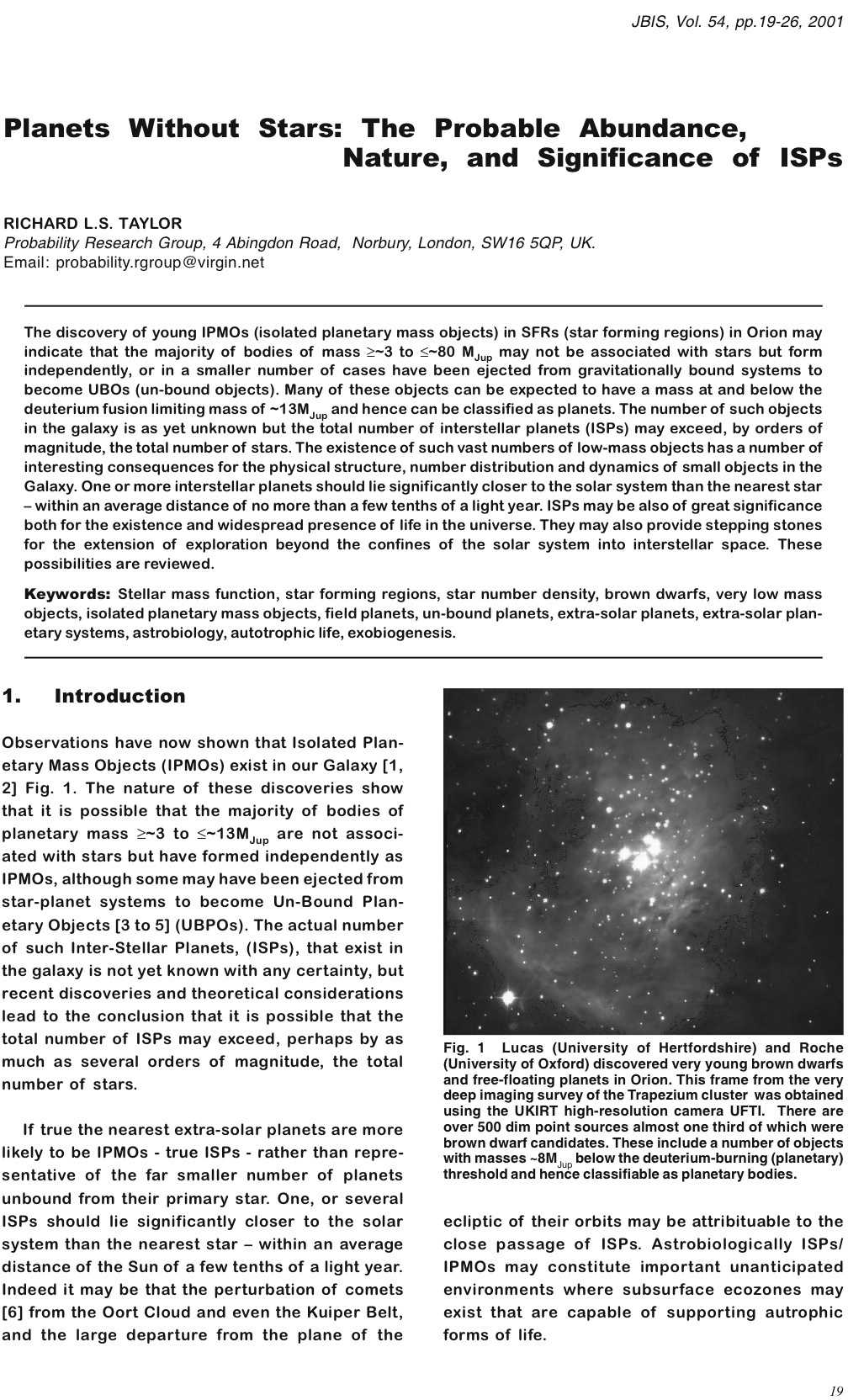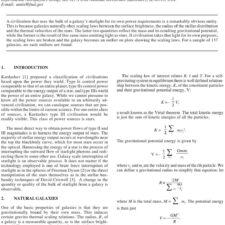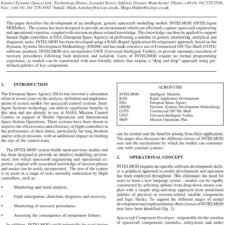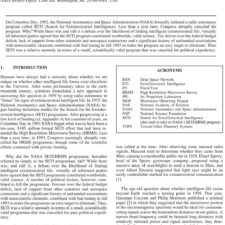Planets Without Stars – The Probable Abundance, Nature and Significance of ISPs
£5.00
R.L.S. Taylor (2001), JBIS, 54, 19-26
Refcode: 2001.54.19
extra-solar planetary systems, astrobiology, autotrophic life, exobiogenesis.
Abstract:
The discovery of young IPMOs (isolated planetary mass objects) in SFRs (star forming regions) in Orion may indicate that the majority of bodies of mass ~3 to ~80 MJup may not be associated with stars but form independently, or in a smaller number of cases have been ejected from gravitationally bound systems to become UBOs (un-bound objects). Many of these objects can be expected to have a mass at and below the deuterium fusion limiting mass of ~13MJup and hence can be classified as planets. The number of such objects in the galaxy is as yet unknown but the total number of interstellar planets (ISPs) may exceed, by orders of magnitude, the total number of stars. The existence of such vast numbers of low-mass objects has a number of interesting consequences for the physical structure, number distribution and dynamics of small objects in the Galaxy. One or more interstellar planets should lie significantly closer to the solar system than the nearest star – within an average distance of no more than a few tenths of a light year. ISPs may be also of great significance both for the existence and widespread presence of life in the universe. They may also provide stepping stones for the extension of exploration beyond the confines of the solar system into interstellar space. These possibilities are reviewed.





